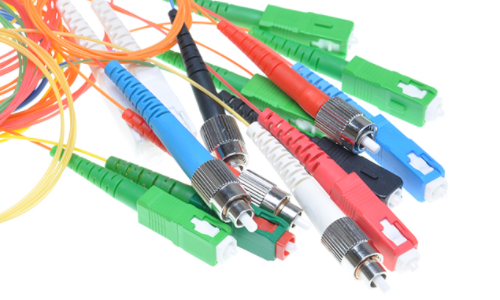ᐃᑭᒋᐊᕐᕕᖓ ᑲᑉᐳᑎᓗᒍ %u.
ᐃᑭᒋᐊᕐᕕᖓ ᑲᑉᐳᑎᓗᒍ %u.
ᐃᑭᒋᐊᕐᕕᖓ ᑲᑉᐳᑎᓗᒍ %u.
ᐃᑭᒋᐊᕐᕕᖓ ᑲᑉᐳᑎᓗᒍ %u.
ᐃᑭᒋᐊᕐᕕᖓ ᑲᑉᐳᑎᓗᒍ %u.
ᐃᑭᒋᐊᕐᕕᖓ ᑲᑉᐳᑎᓗᒍ %u.
2024-12-25 1592

Bulk ᐃᑭᒋᐊᕐᕕᖓ ᑲᑉᐳᑎᓗᒍ %u., also known as optical fiber cable or simply fiber cable, is a communication medium that uses light to transmit data. It consists of one or ᐃᑭᒋᐊᕐᕕᖓ ᑲᑉᐳᑎᓗᒍ %u. optical fibers, each encapsulated within a protective jacket to ensure stability and security during data transmission. These fibers are capable of carrying signals over long distances with minimal loss, making them ideal for high-bandwidth applications.
Key Features:
High Bandwidth: Fiber optic cables offer significantly higher bandwidth than traditional copper cables, enabling the transmission of large amounts of data at high speeds.
Long-Distance Transmission: Due to their low signal loss, ᐃᑭᒋᐊᕐᕕᖓ ᑲᑉᐳᑎᓗᒍ %u.s can transmit data over long distances without the need for repeaters or amplifiers.
Electromagnetic Interference Resistance: Fiber optic cables are immune to electromagnetic interference, ensuring data integrity and security.
Durability: The protective jacket and internal structure of ᐃᑭᒋᐊᕐᕕᖓ ᑲᑉᐳᑎᓗᒍ %u.s make them resistant to environmental factors, such as moisture and temperature changes.
The adoption of bulk ᐃᑭᒋᐊᕐᕕᖓ ᑲᑉᐳᑎᓗᒍ %u. brings numerous benefits to various industries and applications:
Enhanced Performance: With higher bandwidth and faster data transmission speeds, ᐃᑭᒋᐊᕐᕕᖓ ᑲᑉᐳᑎᓗᒍ %u.s enable ᐃᑭᒋᐊᕐᕕᖓ ᑲᑉᐳᑎᓗᒍ %u. efficient and reliable communication networks.
Cost-Effective: Although the initial installation cost may be higher, the long-term cost savings due to reduced maintenance and energy consumption make ᐃᑭᒋᐊᕐᕕᖓ ᑲᑉᐳᑎᓗᒍ %u.s a cost-effective solution.
Scalability: Fiber optic cables can be easily scaled to meet future bandwidth requirements, making them a future-proof investment.
Security: The inherent resistance to electromagnetic interference and the difficulty in tapping ᐃᑭᒋᐊᕐᕕᖓ ᑲᑉᐳᑎᓗᒍ %u.s enhance data security.
Bulk ᐃᑭᒋᐊᕐᕕᖓ ᑲᑉᐳᑎᓗᒍ %u. finds widespread application in various sectors, including:
Telecommunications: Fiber optic cables are the backbone of modern telecommunications networks, enabling high-speed internet, voice, and video communication.ᐃᑭᒋᐊᕐᕕᖓ ᑲᑉᐳᑎᓗᒍ %u.
Datacenters: In datacenters, ᐃᑭᒋᐊᕐᕕᖓ ᑲᑉᐳᑎᓗᒍ %u.s are used to connect servers, storage devices, and network equipment, ensuring high-speed data transfer and low latency.
ᐃᑭᒋᐊᕐᕕᖓ ᑲᑉᐳᑎᓗᒍ %u.
Broadcasting and Media: Fiber optic cables are essential for transmitting high-definition video and audio signals in broadcasting and media production.
Industrial Automation: In industrial settings, ᐃᑭᒋᐊᕐᕕᖓ ᑲᑉᐳᑎᓗᒍ %u.s are used for real-time data transmission in automation systems, enhancing efficiency and safety.
Healthcare: Fiber optic cables play a critical role in healthcare by enabling high-speed data transfer in medical imaging, telemedicine, and patient monitoring systems.
Bulk ᐃᑭᒋᐊᕐᕕᖓ ᑲᑉᐳᑎᓗᒍ %u. is a vital component of modern communication networks, offering unparalleled performance and reliability. Its high bandwidth, long-distance transmission capabilities, resistance to electromagnetic interference, and durability make it an ideal choice for a wide range of applications. As technology continues to advance, the importance of bulk ᐃᑭᒋᐊᕐᕕᖓ ᑲᑉᐳᑎᓗᒍ %u. in supporting high-speed data transmission will only grow.
Keywords: Bulk Fiber Optic Cable, Optical Fiber Cable, High-Speed Data Transmission, Telecommunications, Datacenters, Broadcasting, Industrial Automation, Healthcare.
By incorporating these keywords naturally into the article, we ensure that it is optimized for ᐃᑭᒋᐊᕐᕕᖓ ᑲᑉᐳᑎᓗᒍ %u. engines while providing valuable and informative content to readers. Additionally, consider linking to relevant internal and external resources to further enhance the article's SEO value and reader engagement.